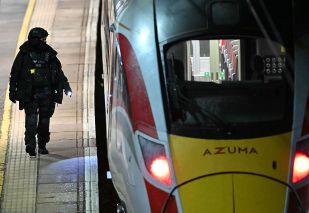Orkney is a charming archipelago of some 70 islands and skerries – 20 of which are inhabited – ten miles north of mainland Scotland. It’s closer to the Arctic Circle than it is to London. It is also at the heart of the wider geographic and cultural Nordic region, with Greenland, Iceland and the Faroe Islands to its west and Norway, Sweden, Denmark and Finland to its east. North Ronaldsay, its northernmost island, is nearer to Tórshavn than it is to Glasgow, and to Bergen than it is to Dumfries.
As Arctic shipping routes become more navigable, Orkney’s strategic location between the North Sea and the Greenland-Iceland-UK gap may make it the most important gateway for ships coming in from the north and sailing onwards to the ports of western Europe or the North Atlantic. While Russia has several major ports along its Arctic coastline, northern European nations have only a few large deep-water ports that can serve the evolving needs of the High North as melting polar ice makes the Northwest passage and Northern Sea Route more navigable. The EU does not have direct access to the Arctic Ocean at all.
The rising geopolitical importance of Orkney cannot be overstated. It is home to 29 piers and harbours, including Scotland’s longest commercial deep-water berth at Hatston Pier. Scapa Flow, with an area of over 125 square miles and average depths of 30 to 40 metres, is the largest natural deep-water harbour in the northern hemisphere and the second largest in the world. It makes Orkney especially well-placed to serve northern shipping routes as Europe’s gateway to the Arctic.
As home over the centuries to settlers, sailors, explorers and whalers, Orkney’s Nordic and Arctic connections are hardly new. Norse sagas (such as Orkneyinga Saga) and sites (such as St Magnus Cathedral) highlight Orkney’s rich past as a seat of power in a Norse empire that wove together settlements from Newfoundland and Greenland to Scotland and Norway.
From the time Norse settlers first arrived in Orkney and Shetland in the late-eighth century, and King Harald Fairhair of Norway annexed the Northern Isles in 875, to the time when the Earldom of Orkney passed to the Kingdom of Scotland in lieu of a dowry payment in 1472, Orkney remained part of the Nordic world. Norse influences can still be seen in its genetic history, place names, dialect and vocabulary.
Over the next centuries, Orkney played a major role in the British exploration and settlement of North America. The Hudson’s Bay Company, formed in 1670, started recruiting in Orkney by 1702, with Orcadians accounting for three-quarters of the workforce by the late-18th century.
In 1780, Captain Cook’s ships Discovery and Resolution first stopped in Stromness after returning to Britain from their voyage in search of the Northwest Passage through the Bering Strait. In 1845, Sir John Franklin’s ships Erebus and Terror made their last stop in Britain in Stromness before their own search for the passage.
Over the 1840s and 1850s, John Rae – the son of an HBC agent in Stromness and himself a surgeon, clerk and later surveyor with the HBC in Canada – embarked on notable Arctic expeditions. He is credited with uncovering the fate of the Franklin expedition and discovering the final link in the Northwest Passage. His birthplace, Hall of Clestrain, still stands in Orphir. The John Rae Society bought it in 2016 and is now working to restore it.
During the two world wars, Scapa Flow served as the chief naval base of the British Grand Fleet and Home Fleet. It was where 74 ships of the German High Seas Fleet were famously interned after the armistice in 1918 and scuttled the following year. Later, it was where HMS Royal Oak was sunk by a U-Boat in 1939, and where Churchill ordered barriers built to block its eastern approaches.
After Nazi Germany invaded the Soviet Union in 1941, Orkney served as a staging point for the Arctic convoys setting out for, what Churchill called, ‘the worst journey in the world.’ Between 1941 and 1945, these convoys transported critical supplies and armaments, all while coming under attack from sea and air, to the Arctic ports of Arkhangelsk and Murmansk to support Soviet resistance and war efforts on the eastern front.
Since the 1970s, Orkney has become a global energy powerhouse. Flotta Oil Terminal processed nearly 422,000 barrels a day of crude oil from North Sea oilfields at its peak in 1978 and exported over 2.6 billion barrels by 2017. Scapa Flow has safely transferred over 28 million barrels over the last decade.
Orkney has also been a world-leading centre of renewable energy. The first grid-connected wind turbine in the UK was tested in Orkney in 1951, and the world’s largest wind turbine was based in Orkney from 1984 to 2000. Today, Orkney has the highest concentration of small and micro wind turbines in the UK – more than 760, making up 10 per cent of the UK’s domestic wind turbines – alongside 12 large-scale turbines.
Orkney is also home to the European Marine Energy Centre, the world’s foremost wave and tidal power test facility, based in Stromness. In 2016, the world’s largest planned tidal stream power project – MeyGen – was launched in the Pentland Firth, south of Orkney, known to have some of the strongest and fastest tidal currents.
When outlining why he wished to acquire Greenland, Trump referred to the threat posed by increasing Russian and Chinese interest and activity in Arctic shipping routes. While these are legitimate concerns, there is little that can be solved through ownership and control of Greenland. It would make more sense to boost cooperation under existing arrangements instead – with Greenland, and with other allies and partners.
It would be helpful for the US to encourage its allies to develop deep-water ports across the region. This would include Nome in western Alaska, Grays Bay in western Nunavut, Finnafjord in eastern Iceland, Scapa Flow in Orkney and Kirkenes in northern Norway. The UK could join forces with its North American and European allies, as well as likeminded Asian partners (such as Japan, Korea and Singapore), to develop a world-class deep-water port, transshipment hub and refuelling station in Scapa Flow. This would be in the national and international interest.
In February, Highlands and Islands Enterprise approved a £5 million grant to support the development of a new deepwater quay at Scapa Flow for offshore wind projects in the North Sea. While this is welcome, any future development should have commercial and military uses as well. These could include establishing a terminal for containers and other cargo, and facilities for the monitoring and surveillance of subsea infrastructure and vessels and submarines transiting through the Greenland-Iceland-UK Gap and the North Sea.
Orkney is home to many Arctic and Nordic cultural treasures. Its maritime capabilities, and energy innovation and expertise make it one of Britain’s strongest links to the Arctic and Nordic region today. Investing in developing a deep-water port at Scapa Flow principally for civilian and military use will be key to unleashing the full potential of Orkney. In doing so it could become Europe’s strategic gateway to the Arctic.








Comments